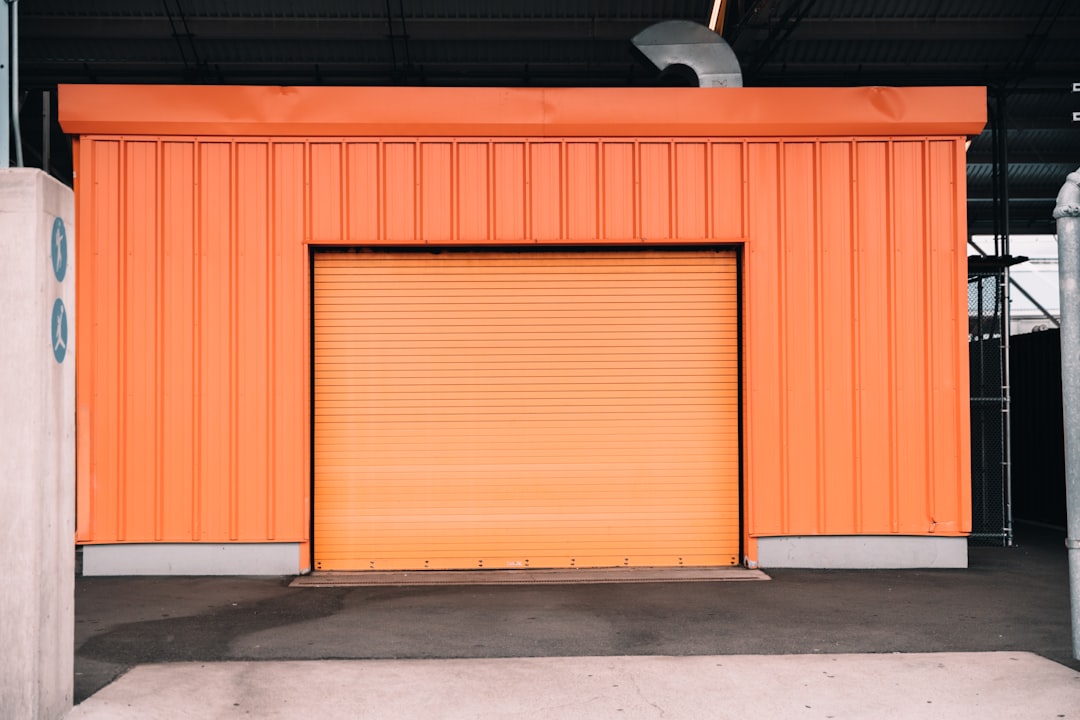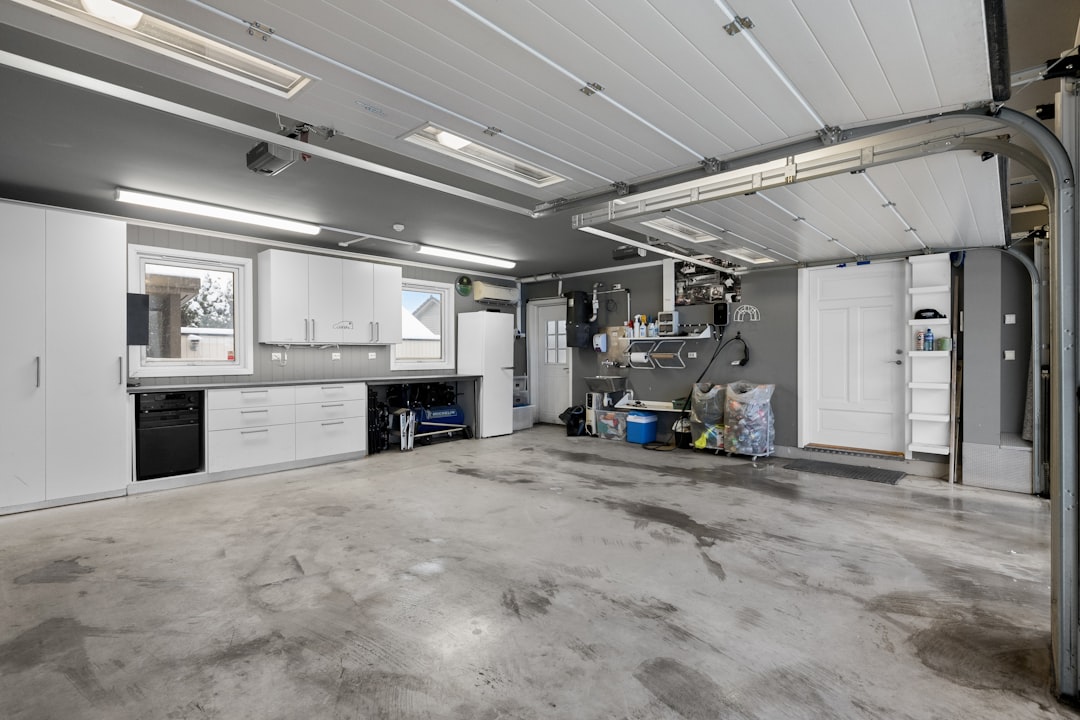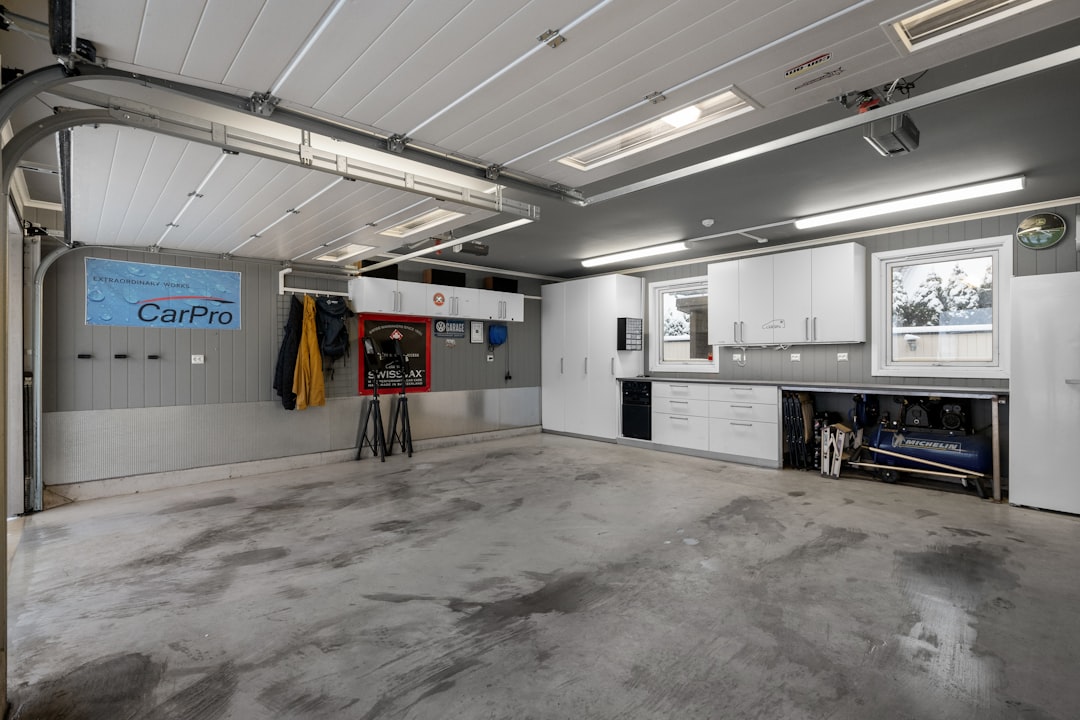

Engage prospects with a scan and streamline customer engagement with FREE QR code marketing tools by Sona – no strings attached!
Create a Free QR CodeFree consultation

No commitment

Engage prospects with a scan and streamline customer engagement with FREE QR code marketing tools by Sona – no strings attached!
Create a Free QR CodeFree consultation

No commitment
Garage remodeling companies are at a pivotal intersection of shifting consumer demands and digital transformation. As homeowners look for more functional, stylish, and value-enhancing garage renovations, the need for streamlined, modern customer journeys is more pressing than ever. Many businesses in this space still rely on traditional methods such as static flyers, word of mouth, or paper-based quotes, which often result in missed high-value prospects, since interest is not always captured or tracked at the moment it arises. This leaves meaningful conversion opportunities unexplored and limits visibility into real, actionable demand signals.
The integration of QR codes into the garage remodeling workflow addresses these challenges by bridging the gap between offline engagement and digital conversion. QR codes placed on signage, direct mailers, job site banners, and remodeling proposals provide a shared path for both the homeowner and the business. Prospects gain instant access to tailored digital experiences ranging from custom landing pages and project galleries to booking forms and cost calculators. These touchpoints replace guesswork with data, helping companies track anonymous traffic and follow up in real time rather than risking delayed responses or missed leads.
With QR codes, garage remodeling companies unlock a new kind of visibility and control. Every physical interaction becomes measurable and interactive, supporting higher engagement, better lead quality, and more precise attribution. This guide explores step-by-step strategies, use cases, and practical insights to show how well-executed QR initiatives can resolve common pain points, such as losing track of high-intent inquiries or struggling to prove campaign ROI, while propelling business growth in today’s evolving market.

Garage remodeling firms often grapple with converting offline interest, such as passersby at job sites, event visitors, or curious neighbors, into actionable digital leads. Too often, high-value prospects move on without ever being tracked in a CRM, creating lost opportunities for timely engagement. QR codes help companies address this challenge by providing a seamless bridge, allowing homeowners to instantly access renovation galleries, request quotes, or schedule consultations straight from their mobile device. The scan removes friction, eliminates manual entry, and captures interest at the exact moment curiosity peaks.
To succeed, think in terms of outcomes rather than tactics. Your goal is not just to place QR codes on every surface. Your goal is to create short, purposeful journeys that match the moment and context. For example, a neighbor walking their dog past an active project is primed for visual inspiration and a quick estimate. A homeowner with your proposal in hand is ready for scheduling and financing options. Every scan point should map to a specific next step, with content tailored to that scenario and analytics feeding back into your CRM.
Here’s how to launch a high-impact QR code campaign:

Garage remodeling companies sit at the junction of physical work and digital research. Homeowners often begin their journey with something they see offline such as a branded truck, a yard sign, or a flyer at a home show. If acting on that interest requires jotting down a URL or calling during business hours, they may never take the next step. QR codes remove that friction and shorten the distance from curiosity to contact, as outlined in QR codes for marketing.
This matters because garage remodeling is a considered purchase that benefits from timely education and fast response. A homeowner who scans a code from a yard sign can watch a brief video of an epoxy installation, compare storage configurations, then request a quote in minutes. Meanwhile, your team is notified, the new contact is scored in your CRM, and the homeowner receives an instant confirmation with the next steps. A process that once relied on chance turns into an orchestrated, measurable journey.
Key pain points include:

Different stages of the garage remodeling buyer journey call for different QR code formats. The right choice improves the experience and raises conversion rates. Your aim is to make every scan feel like the obvious next step for the homeowner in that moment.
In this vertical, options that shorten time to information are most valuable. For example, web link codes that open a custom landing page featuring a neighborhood-specific portfolio, or form codes that prefill a quote request based on context. Contact capture and scheduling are also crucial, so vCard and SMS codes have a role in job site and event scenarios where prospects want a quick handoff.
Useful formats include:

Garage remodeling companies engage potential clients at many physical and digital touchpoints. Each one is a chance to capture interest early and guide it toward a measurable next step. With QR codes, surface-level awareness turns into insight-rich interactions that fill your pipeline with higher intent leads.
Start by mapping the places you already meet homeowners, then add QR codes with clear CTAs that align to the moment. Yard signs can promise a 2-minute quote. Direct mail can unlock a seasonal offer. Event booths can showcase interactive design tools. Post-project paperwork can request reviews and referrals. Vehicle wraps can nudge drivers at traffic lights to view real projects completed nearby.
Growth opportunities for QR campaigns include:

QR codes are most powerful when they streamline a specific conversion step. For garage remodelers, that typically means accelerating the path from offline awareness to online action, then from online action to a booked appointment. The following use cases meet homeowners in contexts they already trust and simplify the next step.
To maximize impact, pair each use case with a tailored landing experience rather than a generic homepage. Personalization can be as simple as swapping hero images based on neighborhood or focusing on the service that sparked the interest such as flooring versus storage.
Every QR scan is a data point that reveals intent. When you tag codes by placement, creative, and use case, you can build audience segments that reflect where a homeowner is in their journey and what they care about most. Those segments then power better retargeting and more relevant follow-up. For step-by-step tactics, see Sona’s Playbook titled Intent-Driven Retargeting.
For garage remodelers, this means recognizing differences such as a homeowner attracted to epoxy durability content versus one who spent time customizing storage. It also means thinking about timing and context. A weekend scan from a neighborhood sign might represent a casual browser, while a scan from a proposal likely indicates buying intent.
When companies sync scan data into their CRM and ad platforms, they can:
QR codes do not replace your marketing plan. They make it measurable and more connected. By weaving QR codes into the channels you already use, you convert passive exposure into active engagement and capture richer data along the way. The result is a cleaner pipeline, faster cycles, and a clearer understanding of what works.
In garage remodeling, the most common channels are print collateral, direct mail, out-of-home signage, vehicles, local events, and social. Adding scannable calls to action across these surfaces gives homeowners a consistent way to learn more, while your team learns which messages and placements move the needle.
Practical integrations include:
Launching a QR program is not complex, but a bit of structure helps you move from idea to impact quickly. Begin with a single use case in a high-visibility placement, then expand as you learn. Keep your early focus on clean attribution, speed to follow-up, and a simple, mobile-first destination.
Before you print anything, define what success will look like in 30, 60, and 90 days. For example, “Generate 40 scans from three yard signs and convert 20 percent to appointments” or “Reduce time-to-first-contact on proposal scans to less than 15 minutes.” These targets clarify design choices and investment.
Select an action that addresses a common conversion gap. Example: drive homeowners from yard signs to an interactive project inspiration page that captures basic details and invites them to book a consult. Keep the initial journey short and rewarding, with a clear value proposition such as “See projects completed on your street.”
Dynamic QR codes offer flexibility to update destinations, track scans, and segment audiences without reprinting. Static codes are appropriate for unchanging assets such as a warranty PDF or maintenance guide.
Your design should encourage scanning and remove ambiguity. Use brand colors thoughtfully, maintain high contrast, and respect the quiet zone around the code. Include a short, benefit-led CTA that explains what happens next.
Start with placements that already get attention and where scanning is easy and safe. Give each placement its own code for attribution. Stage deployments in waves so you can refine between print runs.
Measure performance from scan to revenue. Look past vanity metrics to understand conversion rates by code, content preference, and speed to follow-up. Use what you learn to iterate quickly.
In garage remodeling, it is not just about generating leads. It is about knowing which interactions drive booked appointments and won projects. Without that visibility, it is hard to justify spend or refine strategy. QR codes change the equation by capturing real-world intent and connecting it to digital outcomes you can measure.
Modern platforms such as Sona QR and Sona enable tracking from the initial scan through CRM enrichment and pipeline progression. You can see who scanned, when they scanned, and what they did next, then attribute revenue to specific placements and campaigns. This closes the loop between offline and online activity and turns every yard sign, mailer, or proposal into a measurable growth asset. For attribution strategy, see Sona’s blog post titled Single vs Multi-Touch Attribution Models.
Critical questions teams can now answer:
Start creating QR codes for free.
Once you have a few wins, you can scale with intention. The goal is to make QR codes a consistent, reliable part of your demand capture engine rather than a one-time experiment. A little operational rigor goes a long way, especially around attribution and automation.
Focus on the fundamentals first. Unique codes per placement, UTM tagging on every destination, and fast, personalized follow-up will do more for your conversion rate than advanced tactics. Once your base is set, layer on creative deployments and audience segmentation to accelerate growth. For inspiration, see this QR code case study.
Examples help teams visualize what good looks like. While every market is different, the principles remain the same: meet people where they are, set clear expectations, make scanning worthwhile, and follow up fast.
Use these scenarios as a springboard for your own tests. Start small with tight attribution and multiple creative variations. If you can show a clear lift in quote requests or shortened sales cycles, it is easy to secure more budget for the next wave. For additional inspiration, explore these QR marketing examples.
Small details make a big difference in scan rates and conversion quality. Pay attention to design, placement, and the experience that follows the scan. Test broadly, learn quickly, and do not hesitate to retire assets that do not perform.
Avoid common mistakes such as sending scanners to a generic homepage, burying forms behind multiple clicks, or printing codes too small to scan from a reasonable distance. The goal is a short, satisfying path: scan, see relevant content, take the next step.
QR codes are redefining how garage remodeling companies capture and convert interest in a business environment shaped by shifting consumer expectations and digital-first journeys. By transforming static marketing materials and in-person touchpoints into interactive entry points backed by granular engagement data, every yard sign, proposal packet, and job site banner becomes a dynamic onramp to your sales pipeline. The result is a smarter, faster path from scan to scheduled consultation to signed contract.
These strategies help resolve longstanding pain points: surfacing high-intent leads who might otherwise remain anonymous, enabling timely follow-up that beats competitors to the inbox, and illuminating campaign attribution from scan to sale. With platforms like Sona QR handling code creation, tracking, and CRM sync, and Sona.com connecting scans to pipeline and revenue, garage remodeling firms can prove ROI while building lasting client relationships. Start with one high-visibility use case, measure the impact, then expand across your marketing mix to turn every moment of curiosity into measurable growth.
QR codes have transformed garage remodeling companies from traditional marketing efforts into dynamic, measurable growth engines. Whether it’s attracting new clients, enhancing the customer experience with instant access to project portfolios and estimates, or streamlining communication, QR codes replace outdated methods with fast, mobile-friendly interactions that capture valuable engagement data to boost conversions.
Imagine knowing exactly which brochures, job site signs, or flyers drive the most inquiries—and being able to update offers or showcase new designs instantly without reprinting. With Sona QR, you create dynamic, trackable QR codes in seconds, monitor every scan in real time, and link interactions directly to revenue growth. No lost leads, no missed chances—just smarter, more effective marketing that accelerates your remodeling business.
Start for free with Sona QR today and turn every scan into a new customer, a signed contract, or a successful remodel.
The article does not list specific companies but suggests looking for garage remodeling firms that use modern, digital tools like QR codes to enhance customer engagement and lead tracking.
The article does not provide specific cost figures but mentions that QR code tools can offer instant cost calculators and quick quotes to help homeowners estimate project expenses.
Latest trends include using digital transformation such as QR codes to create interactive customer journeys, offering custom landing pages, project galleries, and seamless scheduling or quote requests to improve lead conversion.
Benefits include creating a more functional and stylish space that enhances home value, while modern remodeling companies provide faster, data-driven engagements that improve project outcomes and customer satisfaction.
Look for companies that integrate digital tools like QR codes for easy access to project portfolios, cost estimates, and scheduling, and that track leads efficiently to provide timely follow-up and measurable results.
QR codes bridge offline and online engagement by allowing homeowners to instantly access digital content like galleries, quotes, and booking forms, which increases lead capture, improves follow-up speed, and provides measurable campaign data.
Common places include yard and job site signs, direct mailers, event booths, vehicle wraps, brochures, invoices, and post-project documentation.
Useful QR code formats include web links to portfolios, forms for quotes or consultations, vCards for contact sharing, SMS or email for quick inquiries, and dynamic codes that can update destinations without reprinting.
They can track QR code scans by location, time, and device, sync data into a CRM, monitor conversion rates from scan to appointment, and attribute revenue to specific campaigns or placements.
Avoid sending users to generic homepages, burying forms behind multiple steps, using small or low-contrast codes, and failing to pair codes with clear, benefit-driven calls to action.
Begin with a clear use case and measurable goals, choose dynamic QR codes for flexibility, design mobile-friendly landing pages with specific CTAs, deploy codes in high-visibility locations, and track performance to optimize results.
Yes, QR codes enable immediate lead capture and can trigger automated CRM workflows for timely and personalized follow-up, which significantly increases conversion rates.
Use Sona QR's trackable codes to improve customer acquisition and engagement today.
Create Your FREE Trackable QR Code in SecondsJoin results-focused teams combining Sona Platform automation with advanced Google Ads strategies to scale lead generation

Connect your existing CRM

Free Account Enrichment

No setup fees
No commitment required

Free consultation

Get a custom Google Ads roadmap for your business






Launch campaigns that generate qualified leads in 30 days or less.
